"The artist and his mother" National Gallery of Armenia 2017
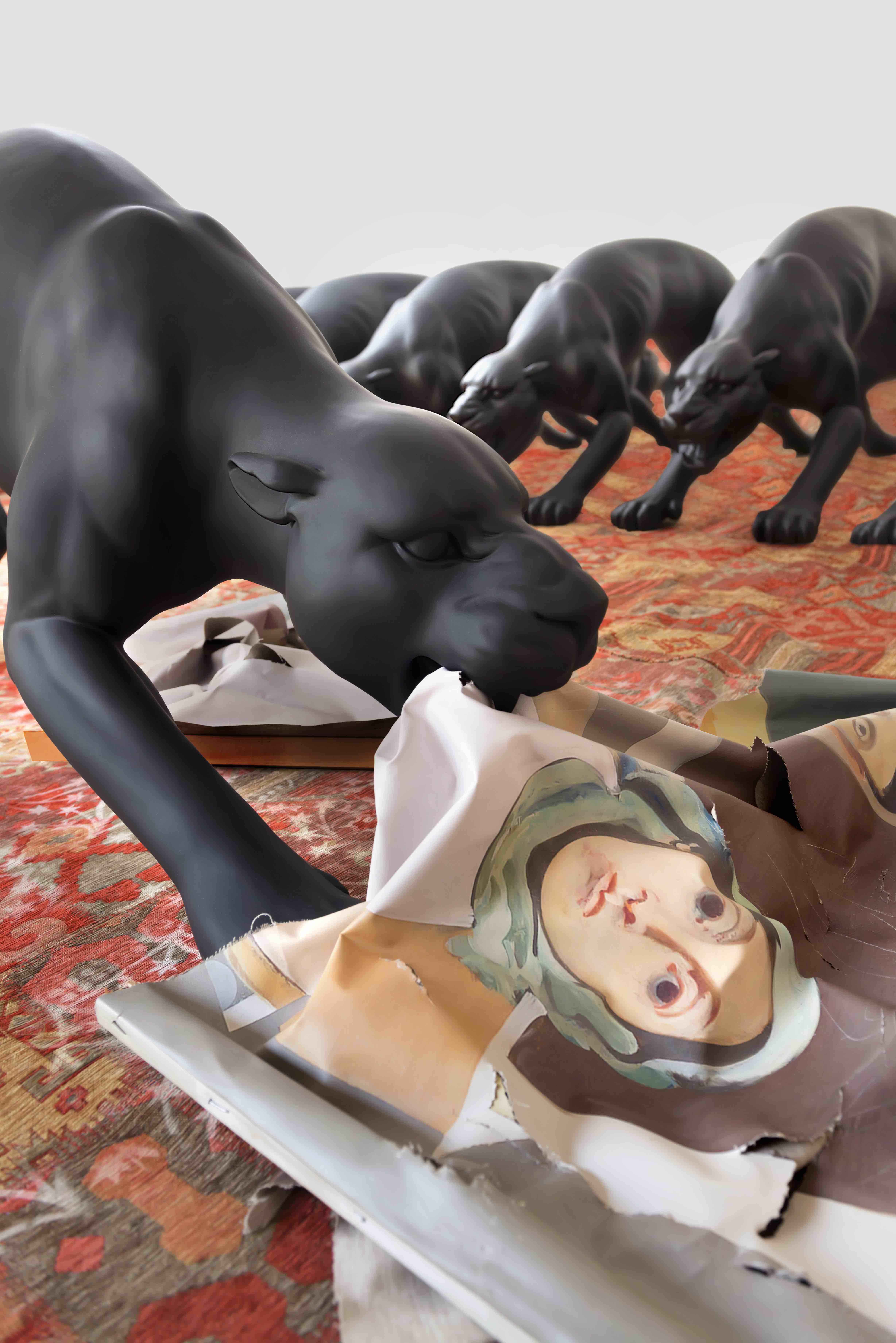
National Gallery of Armenia 2017
"The artist and his mother"
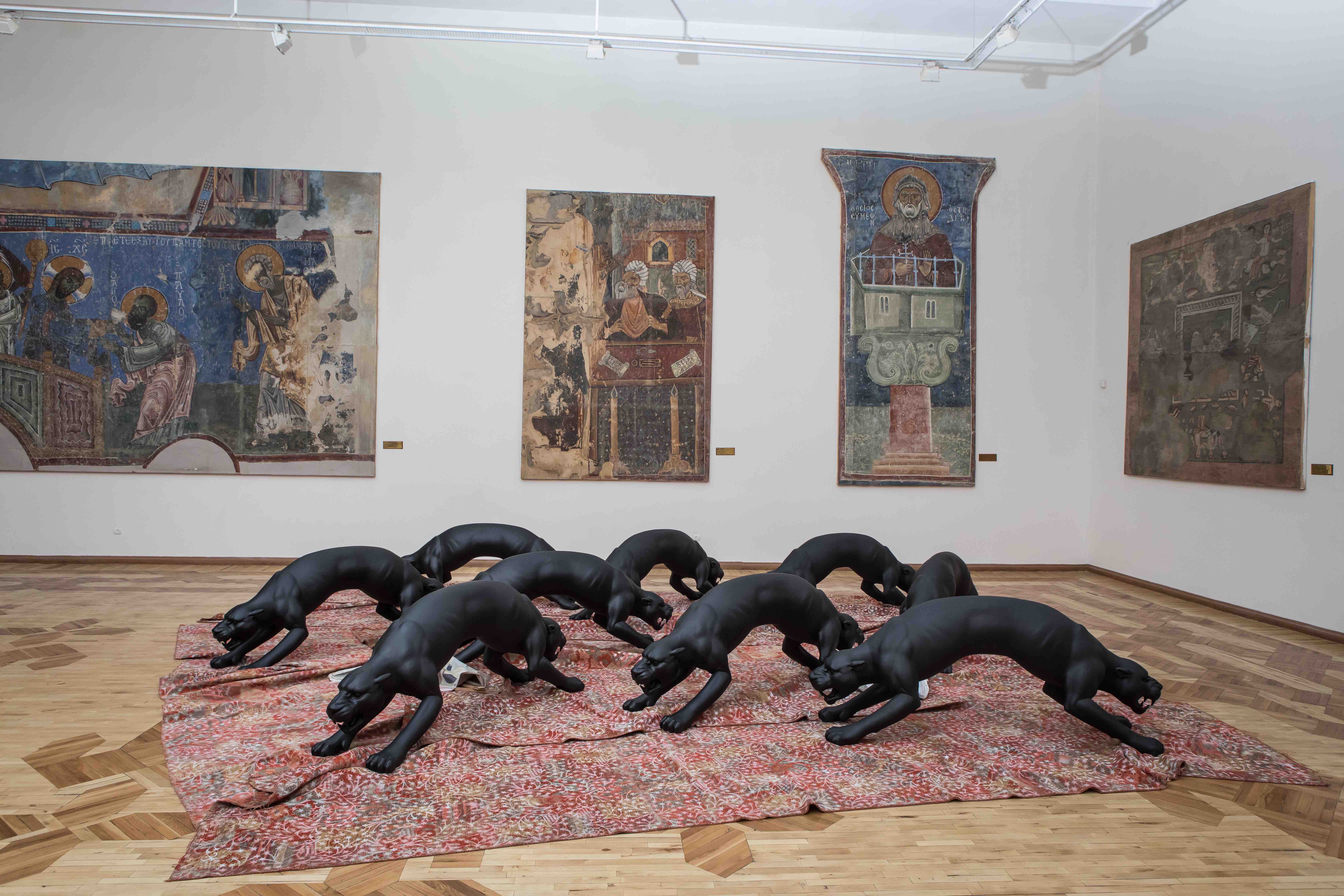
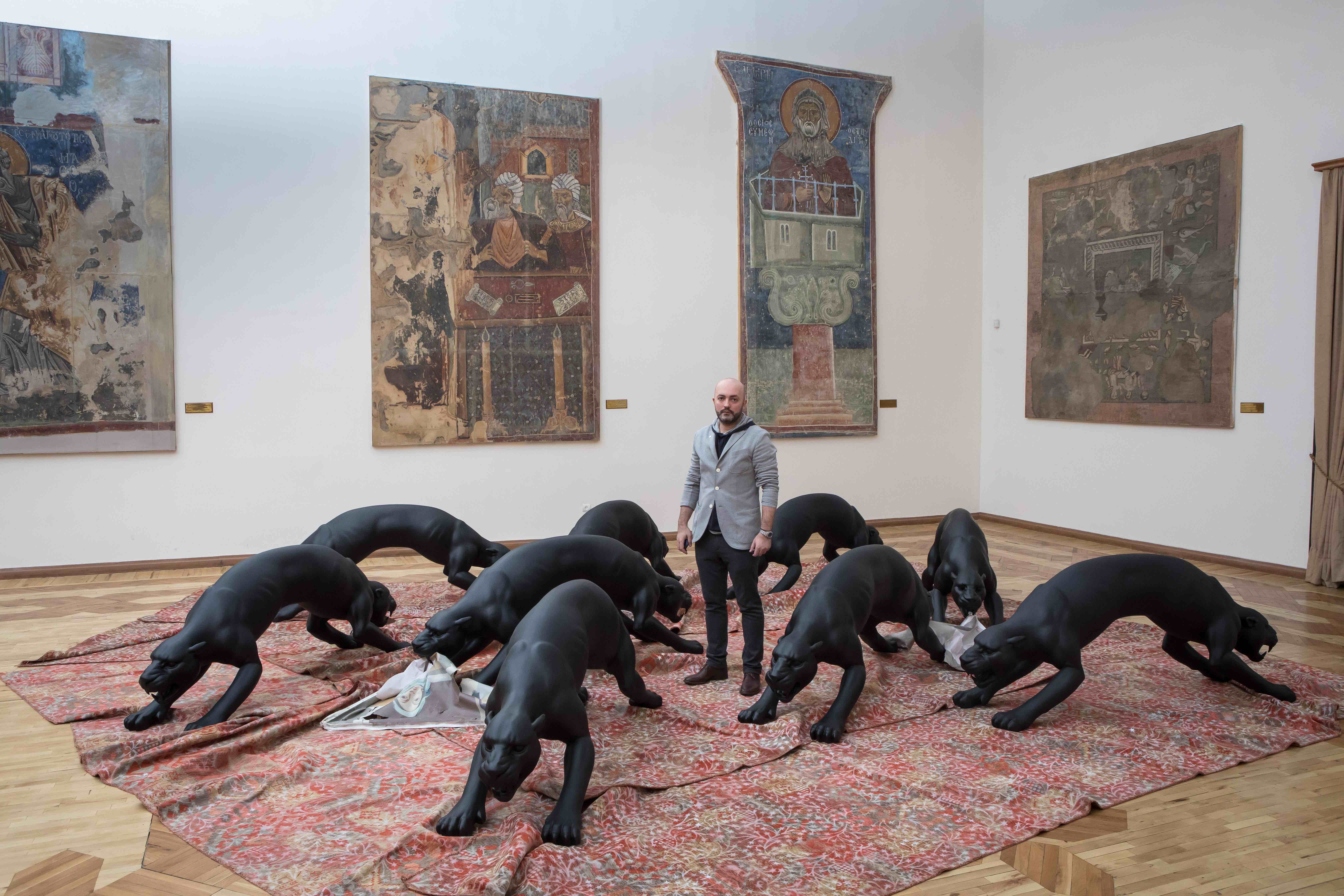
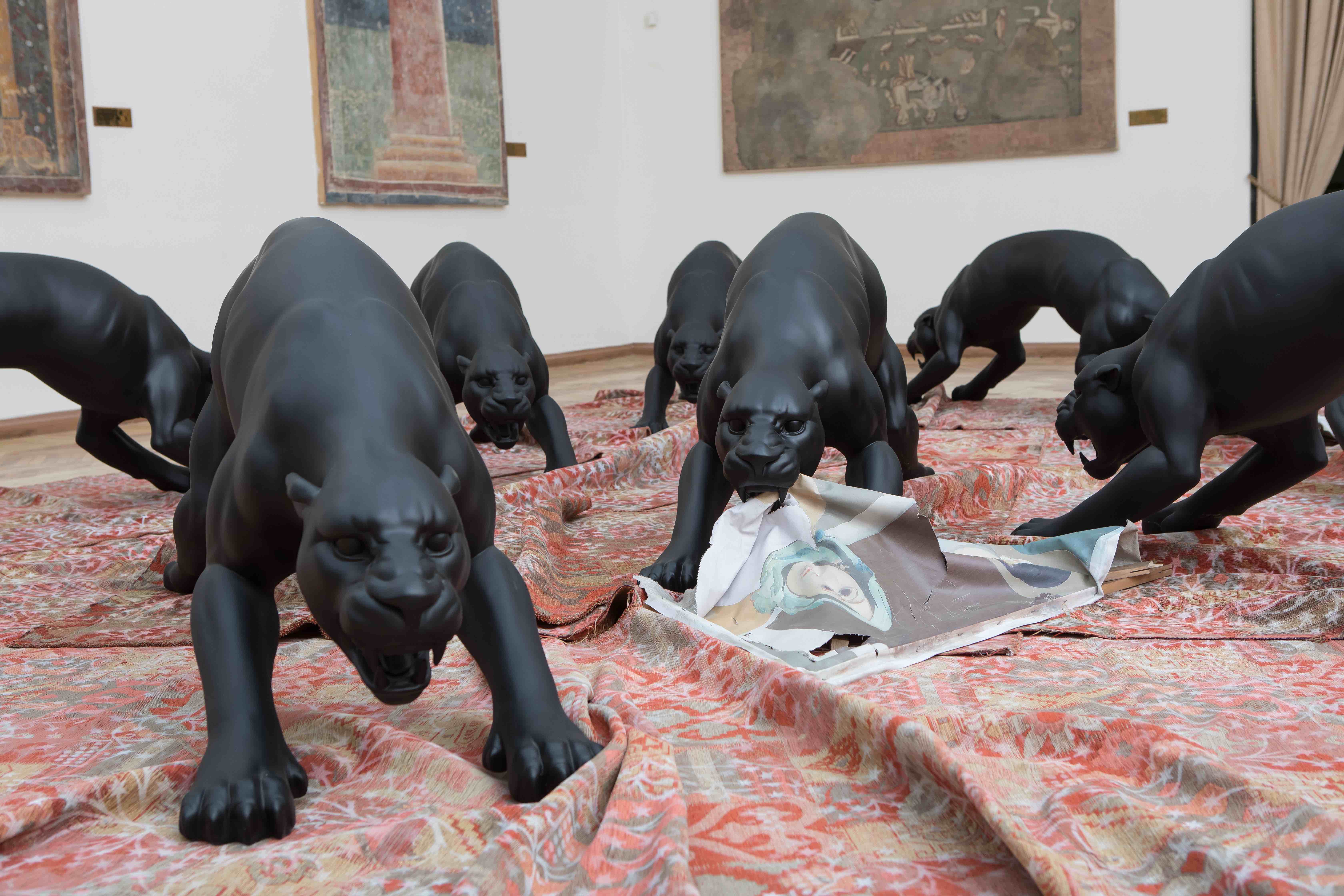
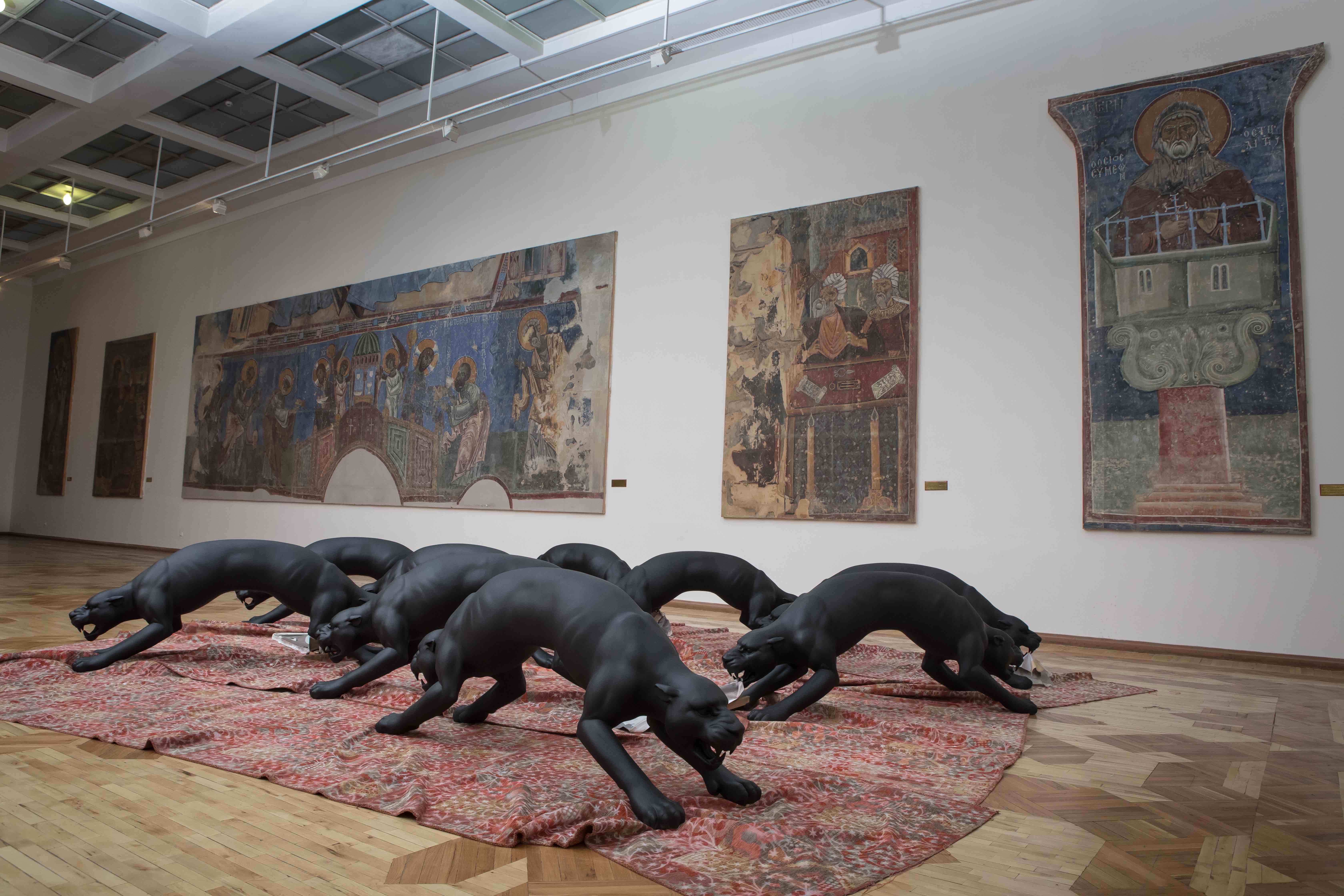
When you set out to describe the most painful moments experienced by your people through the
language of art, the figures and the symbols you make reference to must be the highly expressive
and significant. There are brilliant works that tell the story of the Armenian Genocide. In
literature there is The Unstoppable Bell Tower by Paruir Sevak, in architecture there is the
memorial by Dzidzernagapert, in music there is Komitas, in painting there is The Artist and His
Mother by Arshile Gorky.
I drew inspiration from the painting by Gorky and its title for the installation made for my
exhibition at the National Gallery of Armenia. In my installation the artist evoked in the title is
not only the young Gorky, but the many young people (and old) who lived as refugees. The
mother, with signs of pain etched on her face, becomes the mother of every Armenian. Here
Gorky’s painting has been reduced to shreds by two-faced panthers. The installation represents a
sacrilege: man is the perfect creature created by God, hence destroying a painting that depicts
him is a sacrilege that surpasses the act of vandalism. These panthers represent evil as such. They
are ravenous animals, yet their dark colors and the way in which the surface is handled make
them, in some way, captivating: evil has an alluring power, this is well-known. And it is this very
alluring power that must be defeated. These two-faced panthers reveal two identical faces of the
same coin; the same panther exhibits the nature of the fathers of the Ottoman Empire and that of
the young Turks who never ceased to cover the ground travelled by their forefathers.
At their feet, there is a classic Armenian rug, red as blood. The white superimposed decor
expresses the hope for change.
Rafael Megall
Yerevan 2017
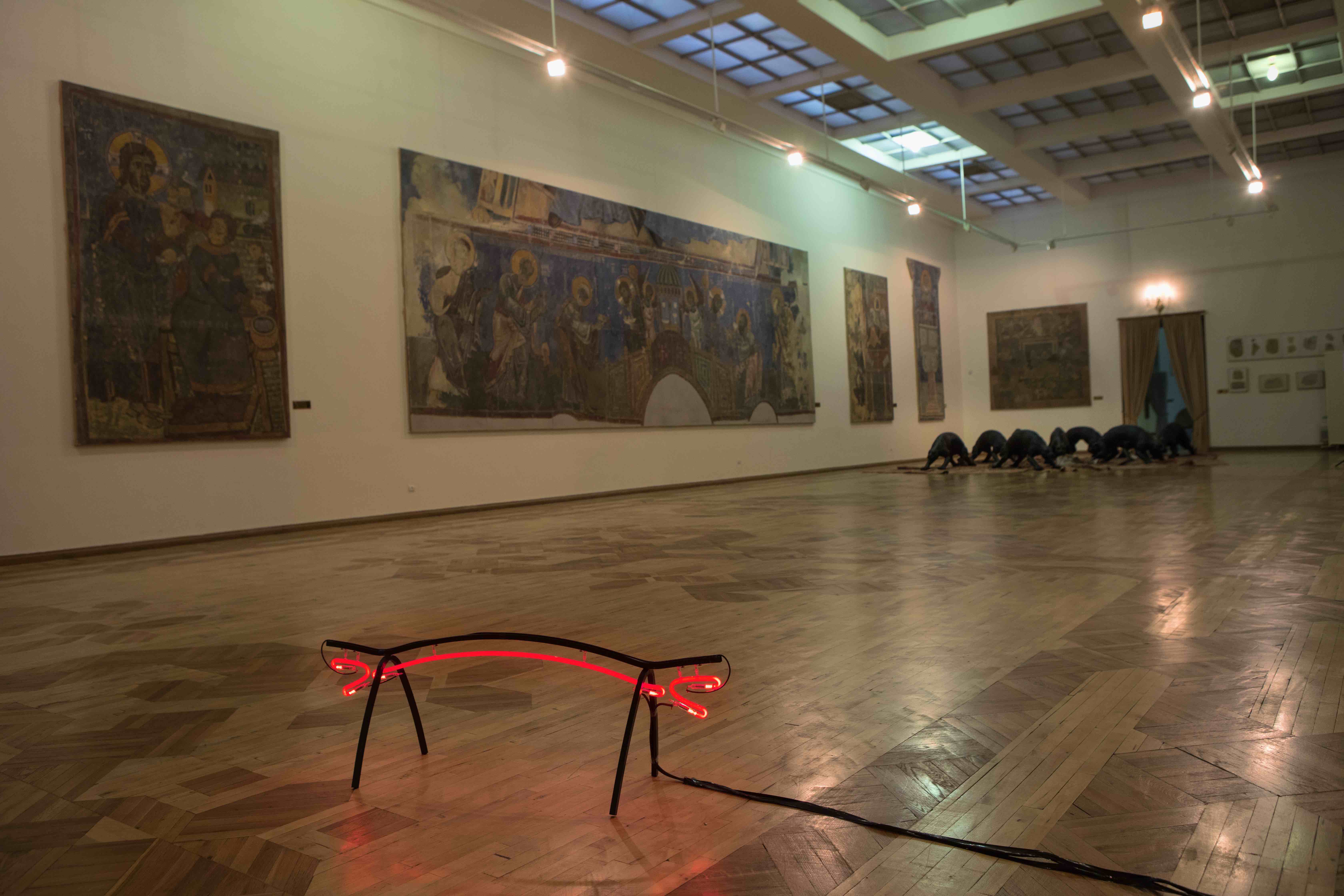
Եթե փորձում ես արվեստի լեզվով արտահայտել քո ժողովրդի պատմության ամենացավոտ էջը, ապա ընտրված կերպարներդ ու խորհրդանիշներդ ամենախոսունը ու արտահայտիչը պիտի լինեն։ Հայոց Ցեղասպանություն․․․ Գրականության մեջ` Սևակի «Անլռելի զանգակատուն», ճարտարապետության մեջ՝ Ծիծեռնակաբերդի հուշահամալիրը, երաժշտության մեջ՝ Կոմիտասը, գեղանկարչության մեջ՝ Արշիլ Գորկու «Նկարիչն ու իր մայրը» կտավը։
«Նկարիչն ու իր մայրը» ինստալիացիայում նկարիչն ու իր մայրը փոխարինվում են մենք՝ հայերս ու մեր ծնողները գաղափարով, ովքեր դարձան Ցեղասպանության զոհ։ Այստեղ Գորկու կտավը հոշոտված և պատառոտված է երկգլխանի հովազների կողմից: Մարդն էլ, որպես Աստծո ամենակատարյալ ստեղծագործություն, մի կտավ է, արվեստի գլուխգործոց, ուստի նրան պատկերող կտավի ոչնչացումը վանդալիզմ է։ Այս հովազները ընչաքաղց կենդանիներ են, այնուամենայնիվ, մուգ գույնը և ողորկ մակերեսը դրանց ինչ-որ կերպ գրավիչ է դարձնում. հայտնի է, որ չարն իր մեջ հմայող ուժ ունի, որին պետք է հաղթել: Երկգլխանի հովազները խորհրդանշում են Օսմանյան կայսրությունն ու երիտթուրքերին։ Հայկական գորգը՝ հիմնականում կարմիր երանգով, խորհուրդն է Հայկական աշխարհի՝ արյամբ ողողված, իսկ սպիտակ նախշազարդը՝ հայերիս անկոտրում հույսը։
Ռաֆայել Մեգալ
2017